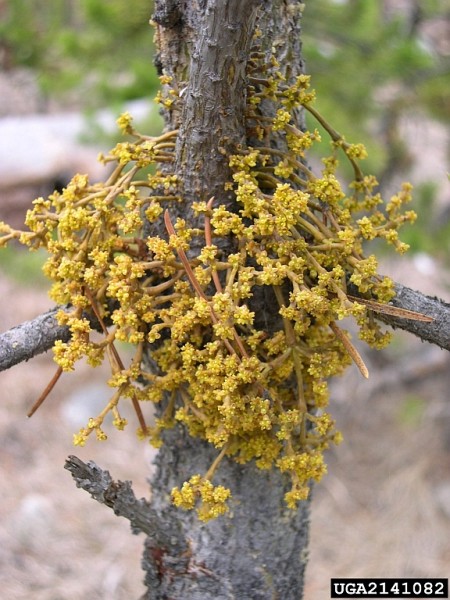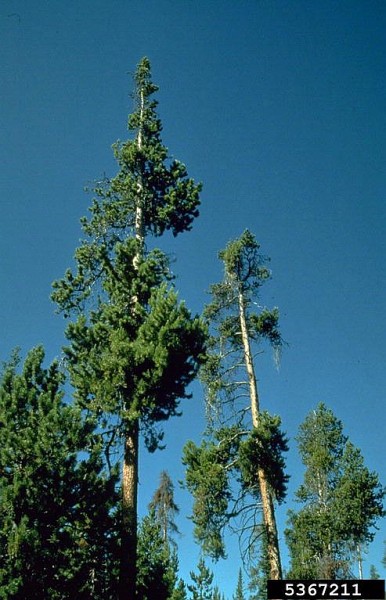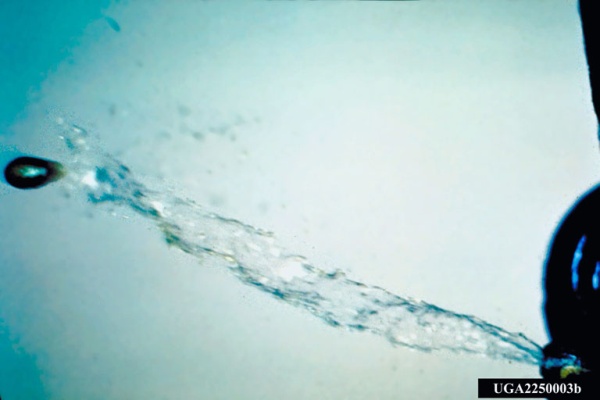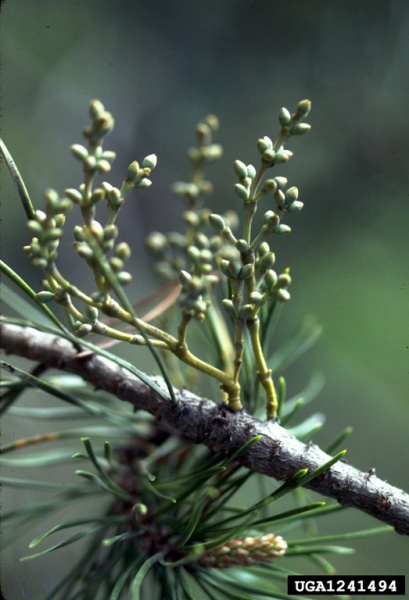‘Tis the season for kissing under the mistletoe but this genus is too small for the purpose.
Mistletoes are parasitic plants in the sandalwood family. The ones we associate with kissing, Phoradendron leucarpum and Viscum album, are evergreen plants that parasitize oak and apple trees. In winter they look like green balls in the bare trees. Click here for a photo and description.
Dwarf mistletoe, on the other hand, is amazingly small. Arceuthobium’s 42 dioecious species parasitize only conifers. The female plant of American dwarf mistletoe (Arceuthobium americanum) is shown above, the male below. Notice the tiny size of the plant relative to the pine needles.

Dwarf mistletoe begins its life as a seed that lands on a tree branch, then germinates and grows beneath the bark, sucking water and minerals. It rarely kills the tree but the tree fights back by developing witches’ brooms or losing branches as shown on this lodgepole pine. Foresters hate dwarf misletoe.

Many mistletoes depend on birds to spread their seeds, but dwarf mistletoe takes matters into its own hands. During the 18 months of seed maturation, water pressure builds up in the seed capsule until it finally bursts out, traveling at almost 50 mph … like this!

Pow! The size of a grain of rice, it can travel 65 feet!
Tiny but powerful. Watch out below!
(all photos are American dwarf mistletoe, Arceuthobium americanum, from Bugwood.org: 1241494 by John W. Schwandt USDA Forest Service, 2141082 by Brytten Steed USDA Forest Service, 2250003 by Frank Hawksworth USDA Forest Service, 5367211 by Mike Schomaker Colorado State Forest Service)

We have desert mistletoe in Arizona. Native Americans eat the berries, but the plant is poisonous – who knew! http://www.flickr.com/photos/sno_leopard/11565108605/